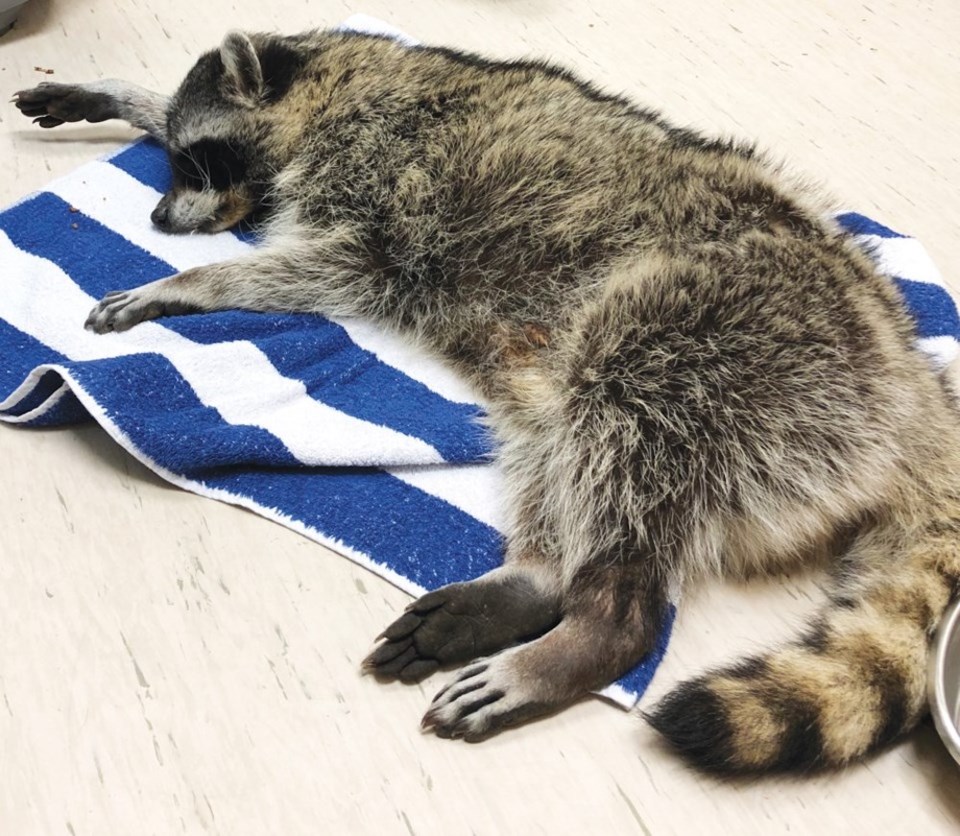A new Hollywood movie had the New York Times digging into an old Sunshine Coast story recently.
A couple of weeks ago, Irene Davy, co-founder of , got a call from Emily Anthes of the New York Times who was inquiring after a raccoon the centre rescued in January 2018.
The when it was rushed to the Sechelt Animal Hospital, rescuers fearing spinal injury or broken pelvis, but it turned out to be stoned. The raccoon had marijuana and benzodiazepines in its system. Fortunately, the vet’s recommended treatment – putting the raccoon in a quiet, dark place to sleep it off – worked and it was released back into the wild later the same day.
“He recovered quite quickly. By six o’clock he was acting like a normal raccoon, hissing and wanting out of the kennel we had him in,” Davy said at the time. How the raccoon came to ingest the marijuana was unclear, though she speculated it may have been a discarded butt or edibles or cannabis bud in a home or shed.
Anthes, whose reporting focuses on science and health, was looking into animals that had gotten their snouts into drugs and how, given the impending
The Elizabeth Banks-directed movie released last month is a fictionalized retelling of a of cocaine in 1985 (the bear overdosed in real life but in the movie it goes on a cocaine-fuelled rampage).
The Elphinstone racoon is just a short anecdote in Anthes’s coverage of the implications of intoxicants for animals (the story is called , but for Davy, the inclusion was a thrill.
“I thought it was gonna be a scam,” said Davy, remembering the email and follow-up call. When she realized it wasn’t, “then of course, I had to find the article because I couldn't remember what happened.” While she remembered getting the call and taking the raccoon to the hospital, the specifics had long faded into the stream of hundreds of animals Davy has treated since. But, Davy found her notes, talked to Anthes, and then carried on.
Cocaine Bear is playing at the Gibsons Cinema as of Thursday.
With files from Sean Eckford



